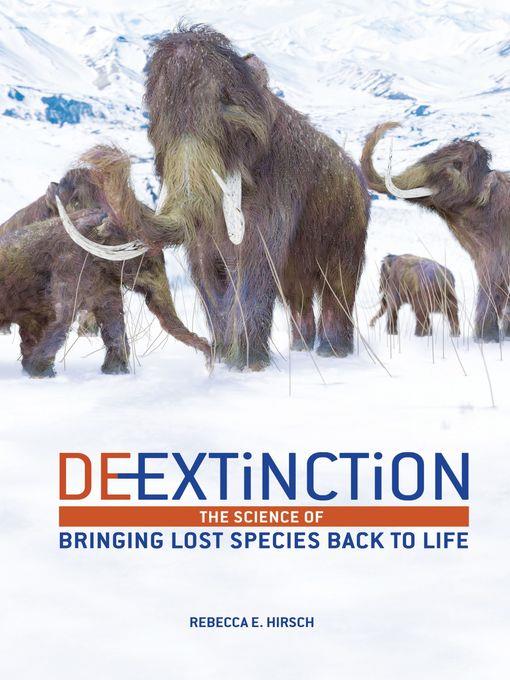
De-Extinction
The Science of Bringing Lost Species Back to Life
فرمت کتاب
ebook
تاریخ انتشار
2017
Lexile Score
1140
Reading Level
7-9
ATOS
8.2
Interest Level
4-8(MG)
نویسنده
Rebecca E. Hirschشابک
9781512439038
کتاب های مرتبط
- اطلاعات
- نقد و بررسی
- دیدگاه کاربران
نقد و بررسی

February 1, 2017
Gr 4-7-This well-conceived science title introduces the fascinating new field of de-extinction. Starting with the 2003 attempt to clone the recently extinct bucardo, the book explores how science and technology might be used to restore lost species, looking at current examples along with theoretical possibilities. Descriptions of scientific processes are clear and succinct and typically reinforced with useful examples. Mammoths and passenger pigeons are examined in detail, and several other animals and some plants are also discussed. Background about the species and how they became extinct smoothly leads into information on what steps have been taken so far to restore them, as well as future possibilities. Complex concepts such as cloning and genome sequencing are explained early on; readers then learn how they have been applied or considered in different ways, depending on the species, available materials, and other factors. The broader implications of de-extinction are also noted, such as the potential impact of mammoths on climate change. While the technological challenges are significant, the author also raises the influence of moral and ethical concerns and potential conflicts involving politics and funding. Visual support is generally effective; it includes photographs of species and scientists and a couple of effective cloning diagrams, though only one species map. The content is current, with status updates as recent as 2016.
Copyright 2017 School Library Journal, LLC Used with permission.

January 15, 2017
"Extinction is essentially a one-way street. Or is it?"Though the closest scientists have come so far to bringing back an extinct species is a newborn bucardo--a kind of mountain goat--that lived for just 10 minutes, Hirsch offers strong evidence that it's only a matter of time before we could be sharing the planet with passenger pigeons, Tasmanian tigers, and even mammoths (but not, probably, dinosaurs) once again. Although she stirs in accounts of extinctions both ancient and modern, along with stories of success and of failure in saving critically endangered species, her descriptions of how genetic material is preserved, reconstructed from scattered fragments, edited, and transferred to create clones, genetically modified organisms, and new creatures comes out as a dry if relentlessly informative mix. Frequent photos and diagrams add visual enhancements to this overview; arguments from some conservationists that "de-extinction" is a waste of resources that could be more worthily spent in saving endangered species add ethical balance; and weighty quantities of source notes and leads to further information at the end add considerable research value. A staid but intellectually stimulating excursion across one of modern biology's most promising, and controversial, frontiers. (glossary, index) (Nonfiction. 11-15)
COPYRIGHT(2017) Kirkus Reviews, ALL RIGHTS RESERVED.

February 1, 2017
Grades 8-12 Could woolly mammoths roam the earth again? Following an overview of the planet's five previous mass extinctions and why scientists believe we are in the midst of a sixth extinction, Hirsch examines how science could bring back some of these extinct species. She explains the limited success of creating a bucardo, a kind of ibex that went extinct in 2000, and how the process of de-extinctioninjecting extinct animals' DNA into somatic cellscould potentially bring back the woolly mammoth, passenger pigeon, and other once abundant species. In this detailed and balanced approach, the author considers necessary factors, such as viable habitats and if related species can act as parents, as well as the numerous pros and cons of this tremendous undertaking. Color photos illustrate some of the species in question and depict scientific work already in progress. Other topics include why Jurassic Park will never be a reality, and how frozen zoos are collecting DNA samples from endangered species. A thought-provoking STEM title for research and debate.(Reprinted with permission of Booklist, copyright 2017, American Library Association.)

























دیدگاه کاربران